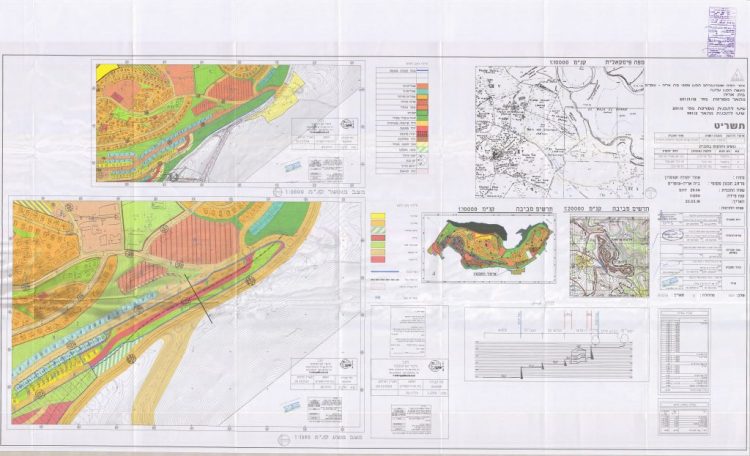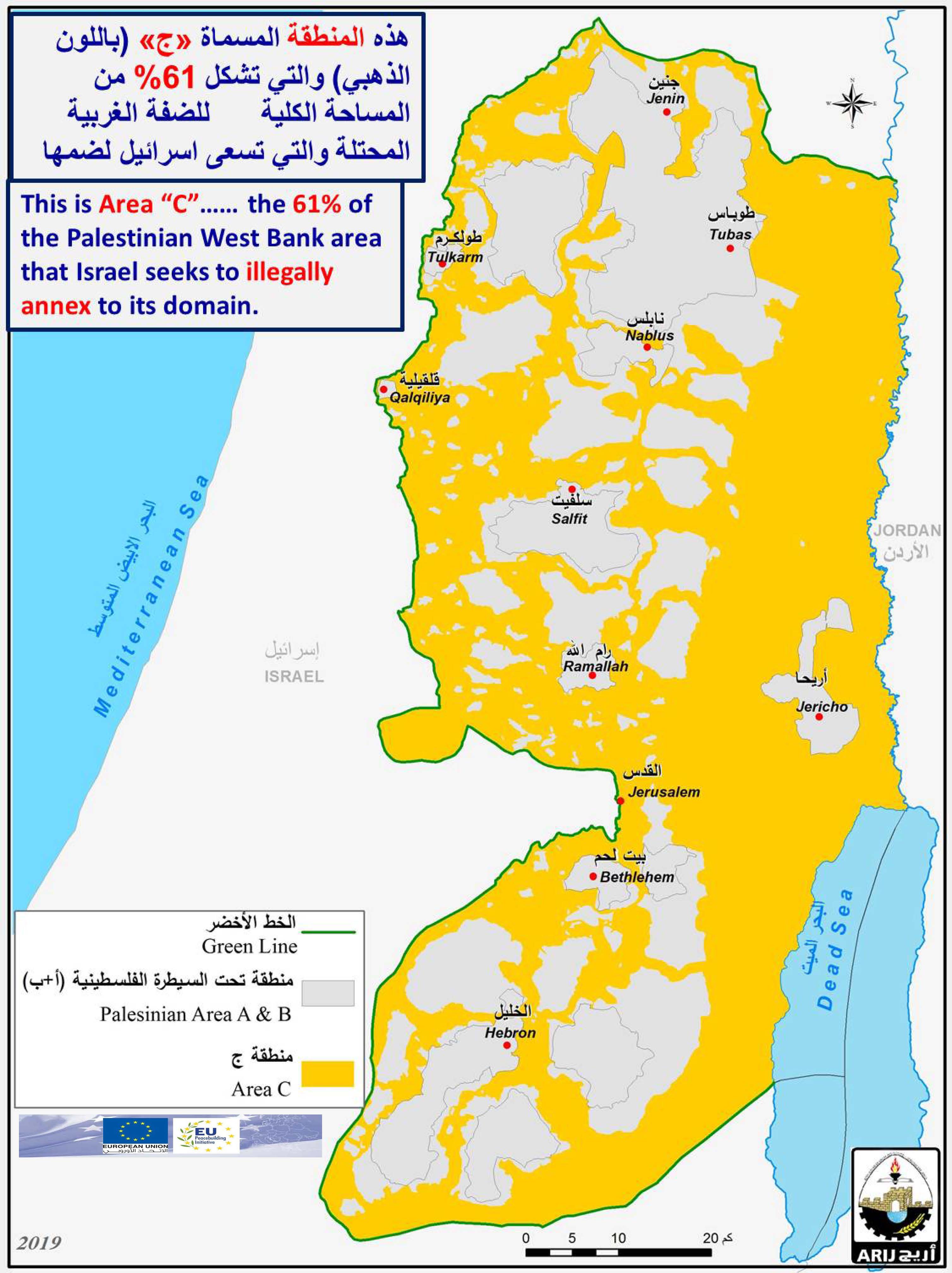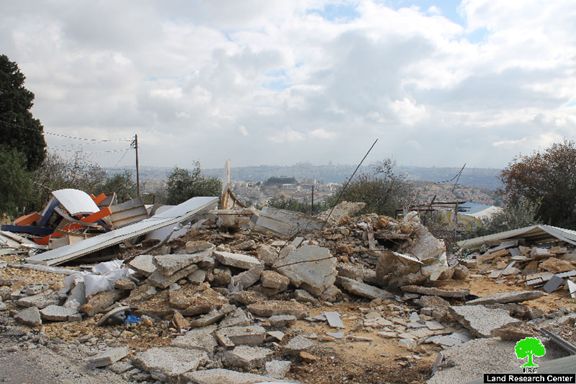On the 31st of August 2016, the High Planning Committee in the Israeli Civil Administration approved the advancement of plans for the construction of 463 new housing units in four illegal Israeli settlements in the occupied West Bank.
|
Details about the approved plans |
|||||
|
# of Plan |
Settlement Name |
Publication Date |
Planning Stage |
Number of Units |
Units Retroactively Approved |
|
220/10/11 |
Givat Ze’ev (Agan HaAyalot) |
31/08/2016 |
Discussion for validation |
20 |
— |
|
201/3/12 |
Beit Arye |
31/08/2016 |
Discussion for validation |
30 |
— |
|
202/1/1 |
Ofarim |
31/08/2016 |
Discussion for validation |
179 |
179 |
|
125/14/1 |
Elkana |
31/08/2016 |
Discussion for Depositing |
234 |
|
|
Total |
— |
— |
— |
463 |
|
Givat Ze’ev Settlement
The Israeli Civil Administration approved the construction of 20 new housing units in the illegal Israeli settlement of Givat Ze’ev, north of Jerusalem city.
According to the Israeli recourses, the Planning community approved the Plan No 220/10/11 to build 20 new housing units at the western part of the settlement, in the Agan HaAyalot neighborhood. The construction of the new housing units will be on 11.599 dunums of land. See the image No. 1 :
Israeli settlement bloc of “Givat Ze’ev”
After the construction of the Israeli Segregation wall in the year 2002, and according to the latest update for the route of the Israeli Segregation Wall which was published on the website for the Israeli “Defense” Ministry, showed that the Segregation wall will encircle the Israeli settlement of Givat Ze’ev and a number of the nearby settlements to the Israeli side of the wall: Givon, Giv’on HaHadasha, Har Adar (Givat Har Adar), Har Shamual, Neve Shamual, and Mevaseret Tsiyon. These settlements created what is known as the “Israeli Settlement bloc of Givat Ze’ev”, which the Israeli Authorities annexed it along with four other settlement blocs in the West Bank to Israel.
Givat Za’av settlement established on 1982 on Palestinian land of Al Jib village, north of Jerusalem Governorate. The illegal Israeli Settlement of Givat Ze’ev area reach to 2,281 dunums of land . The settlement inhabited by 15,640 Israeli settlers.
Plans to build 30 housing units in Beit Arye settlement
The Planning community in the Israeli Civil Administration approved the plan No. 201/3/12 to build 30 housing units in the illegal Israeli settlement of Beit Arye, northwest of Ramallah and Al Bireh Governorate. According to the plan No. 201/3/12, 30 housing units will be constructed on 29.56 dunums of land, at the southwestern part of the settlement. See the image No. 2:
Beit Arye settlement established on 1981 on the Palestinian land of Al Lubban Al Gharbiya village, northwest of Ramallah and Al Bireh Governorate. Beit Arye settlement area reach to 1473 dunums of land, and inhabited by 4516 Israeli settlers (included the Israeli settlers living in Ofraim settlement).
Israeli Authorities Retroactively legalize the construction of 179 housing units in Ofarim Settlement
On the 31st of August 2016, the so-called Israeli Civil Administration retroactively legalized the construction of 179 housing units in the Ofraim settlement, northwest of Ramallah and Al Bireh Governorate. The new housing units came under the plan No. 202/1/1. According to the aforementioned plan, the 179 new housing units to be built on 141 dunums of land. See the image No. 3:
Ofraim is an illegal Israeli settlement established on 1988 on Palestinian land of Al Lubban Ash Gharbi and ‘Abud villages, northwest of Ramallah and Al Bireh Governorate. The Israeli settlement of Ofraim area reach to 493 dunums of lands. Nowadays the settlement inhabited by 4516 Israeli settlers (included the Israeli settlers living in Beit Arye settlement)
A new Plan to build 234 housing units in Elkana settlement
On the 31st of August 2016, the Israeli Civil Administration (ICA) submitted the Israeli plan No. 125/14/1 to build 234 new housing units in the illegal Israeli settlement of Elkana, west of Salfit Governorate. See the Photocopy of “Minutes of the meeting”
According to the meeting carried out by the ICA, the objectives of the plan were to change the construction filed No.500 (special residential area) as follows:
- Determining the number of residential units
- Increasing the area permitted for construction
- Increasing the allowable building height
- Increasing Floors maximum allowed.
Elkana settlement established on 1977 on Palestinian land of Mas-ha and Az Zawiya villages, west of Salfit Governorate. Elkana settlement area reach to 1515 dunums of land, and inhabited by 3871 Israeli settlers.
Israeli settlement bloc of Ariel
Elkana, Beit Arya and Ofraim settlements located within the so-called “Arial Settlement Bloc” which located at the northwestern part of Salfit Governorate, and separated between Salfit and Qalqiliyah Governorate. The “Ariel settlement Bloc” occupied an area reach to 19185 dunums of Palestinian lands from Salfit, Ramallah and Qalqiliyah Governorates.
The Ariel Settlement bloc, and the main four others blocs in the occupied West Bank (Gush Etzion, Giv’at Ze’ev, Ma’ale Adumim, and Modi’in), were defacto created as a result of the construction of the illegal Segregation wall in 2002. These settlement blocs illegally annexed to the border of “Israel”.
Furthermore, the Israeli settlement bloc of Ariel consists of 18 illegal Israeli settlements, in addition to the Israeli outposts, military bases, and the road networks. the table below, shows the Israeli settlements which located within Ariel Settlement bloc:
|
# |
Name of Settlement |
Date of establishment |
Governorate |
Population 2015 |
Area- (dunums) |
|
1 |
Ariel |
1978 |
Salfit |
22,950 |
5280 |
|
2 |
Beit Arye |
1981 |
Ramallah |
4516 |
1467 |
|
3 |
Ofraim |
1988 |
Ramallah |
518 |
|
|
4 |
Barqan Industrial Zone |
1981 |
Salfit |
NA |
2433 |
|
5 |
Barqan |
1981 |
Salfit |
1627 |
699 |
|
6 |
Mazor Atiqa |
1986 |
Salfit |
NA |
706 |
|
7 |
Peduel |
1984 |
Salfit |
1475 |
571 |
|
8 |
Har Alei Zahav |
1983 |
Salfit |
NA |
474 |
|
9 |
Revava |
1991 |
Salfit |
1805 |
701 |
|
10 |
Kiryat Netafim |
1982 |
Salfit |
830 |
359 |
|
11 |
Ali Zahav |
1982 |
Salfit |
983 |
485 |
|
12 |
Bruchin |
1999 |
Salfit |
675 |
413 |
|
13 |
Elkana |
1977 |
Salfit |
3871 |
1483 |
|
14 |
Etze Efrayim |
1985 |
Salfit |
1550 |
582 |
|
15 |
Benot Orot Yisra’el |
1989 |
Salfit |
NA |
155 |
|
16 |
Sha’are Tikva |
1982 |
Qalqiliyah |
5451 |
1064 |
|
17 |
Zamarot |
1985 |
Qalqiliyah |
8086 |
1795 |
|
18 |
Oranit |
1983 |
Qalqiliyah |
||
|
Total |
53,819 |
19185 |
|||
To conclude:
On the ground, the Israeli Authorities continued the construction and expansion of the illegal Israeli settlements in the occupied oPt, and they claimed that these settlements such as Elkana, Givat Ze’ev, Beit ‘Arye and Ofraim which located within the settlement blocs of Givat Ze’ev and Ariel will remain under the Israelis control in any future peace agreement with the Palestinians, and these settlements considered as a part of Israeli cities and towns. As a matter of fact, the existence of Israeli settlements in the West Bank and their expansions are Illegal and contradict with the international law, and most specifically United Nations Security Council Resolutions: 237 (1967), 271 (1969), 446 (1979), 452 (1979), and 465 (1980), among others.
Resolution 446 March 22, 1979 calls on Israel to rescind its previous measures and to desist from taking any action which would result in changing the legal status and geographical nature and materially affecting the demographic composition of the Arab territories occupied since 1967, including Jerusalem and, in particular, not to transfer parts of its own civilian population into the occupied Arab territories'
Also the resolution 452 of the 1979 “calls upon the Government and people of Israel to cease, on an urgent basis, the establishment, construction and planning of settlements in the Arab territories occupied since 1967, including Jerusalem.”
The Fourth Geneva Convention prohibits an occupying power from transferring citizens from its own territory to the occupied territory (Article 49).
The Hague Regulations prohibit an occupying power from undertaking permanent changes in the occupied area unless these are due to military needs in the narrow sense of the term, or unless they are undertaken for the benefit of the local population.
Prepared By
The Applied Research Institute – Jerusalem
ARIJ




















